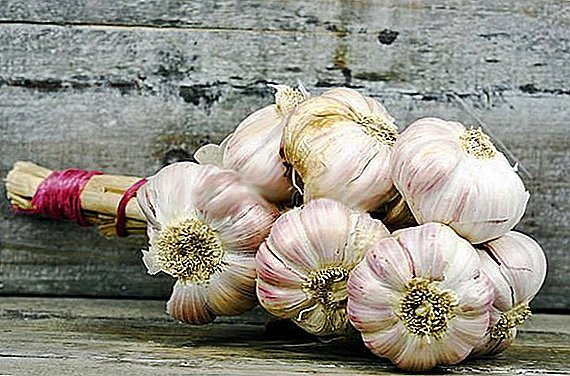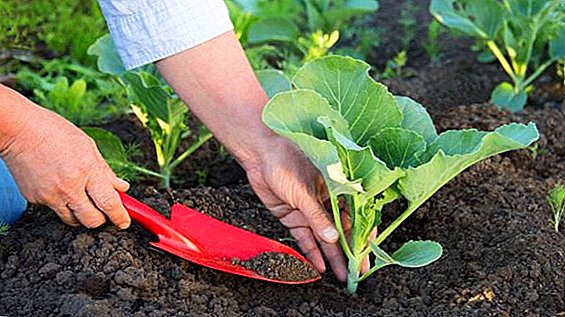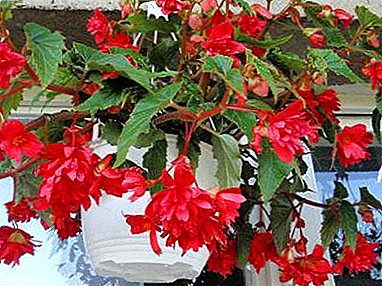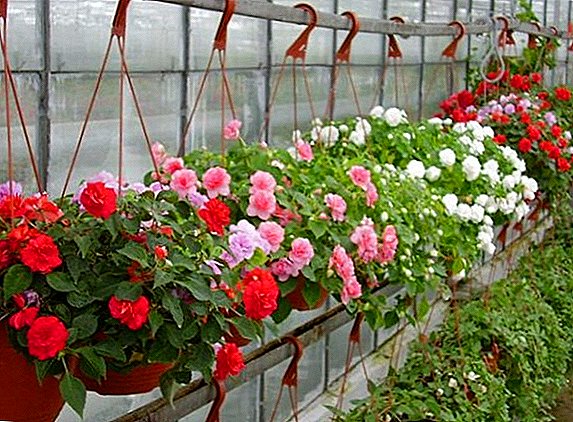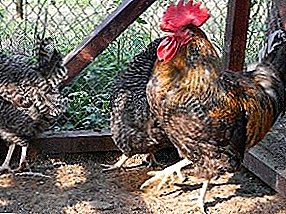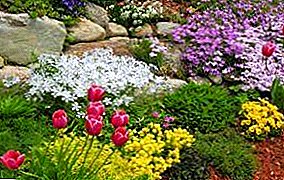
Flower beds invariably delight their appearance in August. During this period, it is so pleasant to observe the variety of colors and shapes, to get aesthetic pleasure.
However, it was in August that it was very important not only to look at the flowers, but also to completely reschedule the garden.
After all, it is at the end of the summer that you see what possibilities your flower gardens have and besides the merits you fully discover the flaws.
In addition, perennials are not transplanted in June and July, and the best period for this comes in August.
Why do you need?
 What in general there are reasons for redevelopment of the flower garden:
What in general there are reasons for redevelopment of the flower garden:
- a considerable part of the time the flower garden does not perform decorative functions - in other words, it does not bloom and probably does not even smell much, generally requires care costs from you, but brings almost nothing in return;
- illiterate plant location - when you formed a flower garden, you were guided for the most part by your abilities, mood and subjective opinion, as a rule, this does not work with flower beds, as a result they start to grow not harmoniously, plants close the light from each other, oppress each other in vain and the like;
- the flower garden has ceased to be relevant - perhaps due to innovations in the landscape design of your territory, or in connection with new designs;
- not consistent with the rest of the space - does not fit into the general style;
- lack of composition - when, outwardly, the flower garden looks both simple and harmonious, creates an aesthetically pleasing sensation, the composition was most often used, which made the flower garden so beautiful, if there is no composition, the flower garden, although beautiful in general, can create a feeling of incompleteness.
Based on the reasons, determine the option of redevelopment..
When it comes to inappropriate shape or size, then use a complete redevelopment. In addition, a complete redevelopment is used when plants are illiterately planted or low decorative functions are observed - the flower garden practically does not bloom.
In all other options, you can use a partial redevelopment, which is quite able to solve your problems with the flower garden.
Full redevelopment
 In fact, you are creating a new flower garden and you can even change the size and shape.
In fact, you are creating a new flower garden and you can even change the size and shape.
Identical is only the dislocation space of the flower bed, although it can also change a little.
Therefore, to begin with, you will need to clear the territory of all unnecessary.
Annuals that do not tolerate transplants, you can safely throw away, send for mulch or other relevant needs.
Such as ageratums, marigolds or viols can be transplanted, they can stay the next year.
Perennials transplant on the vacant space. Perhaps in August you will have a free garden bed, or take some space on the lawn.
You probably won't be able to determine right away where to plant these plants, so just determine some temporary territory for them until spring.
If the original flower garden has plants that you like and that you want to leave - leave. They may well become the basis of a new composition.
After that, you need to decide on the shape and size.
If the previous elements do not suit you, then you will need to destroy the original flower garden further. For example, to remove the bumpers, reduce or increase the size.
By the way about the size. Take as a guide some constructive detail of your home or plot. Many use the window and make a flower garden the size of two windows, three windows, in general, multiple size, so that any composition looks harmonious.
Next, the configuration is determined, that is, the prevailing forms. Here, too, should focus on the site. If a regular layout is used, use basic geometric shapes and lines as a basis; if you have more natural compositions, use curved lines and shapes.
After that, it will be necessary to make new bumpers (if you decide to use bumpers) that can be made from the same material and from the new one.
Anyway, dumping is performed along the outer perimeter, which represents:
- a ditch of 20 centimeters, which is covered with geotextile;
- fine crushed stone is poured into the ditch, decorative gravel can be used on top.
This element is required in order to prevent weeds from sprouting close to your flower garden.
Of course, there are some subtleties about which we will speak further, but if you understand the general system, you can make excellent flower gardens.
So, the essence of this principle is that in a limited space of a flower bed some plants always bloom, and the rest rest - to prepare for flowering or to be after flowering. This result is achieved thanks to the choice of varieties that grow in different halves of the month.
It is best to use the following scheme.:
- the beginning of May;
- the second half of May;
- the beginning of June;
- the second half of June;
- early July.
And then continue until September or even October, if you live in warm lands. For each period, take 1-2 plants depending on the size of your flower bed. Better 2, but this is not always possible.
The space itself will need to be divided into 10-20 segments, each for a separate plant. As a result, you form a flower garden where flowering gradually changes and at each period 1-2 plants are blooming minimum.
As a rule, in fact, the flowers do not particularly compare with the calendar and do not bloom exactly for half a month, so they will just seamlessly replace each other, with even with small overlaps of flowering periods.
Some tips on organizing such a flower garden:
- Do not plant the plants of the same period closely - space apart these plants in space so that the flowers do not turn out to be close together and there are plants that do not bloom during this period;
- do not divide the flower garden into even sectors - draw the curved shapes for each sector with sand to make the flower garden look more natural;
- the tallest plants are planted in the center if the view is open on all sides and land on the back, if the view is open from 1-2 sides;
- flowering period - it can be long or happen twice a season, you need to be able to use it, for example, petunias and marigolds bloom from spring to autumn, and phloxes have two blooms with a short break;
- shrubs - can also be a great addition for flower beds, they give volume;
- empty cells should also be left in order to be able to plant various bulbous and summer plants.
Partial
 It looks like the previous version, but there is less room for maneuver.
It looks like the previous version, but there is less room for maneuver.
First you are looking for composition flaws:
- center - is there the largest and most beautiful plant in the center and is there a center at all;
- secondary plants - whether there are nearby from the central elements of subordination in the composition, that is, the plants are smaller and less bright;
- accents - they can be located both at the center and around the perimeter, the main property is to create bright accents and diversity.
After that, these inaccuracies are eliminated and transformed into advantages, with the help of adding new plants and transplanting flower beds to other parts. In addition to this should reflect on the decor. Look, you may need a lamp, a vase or some other decor for your flower garden.



